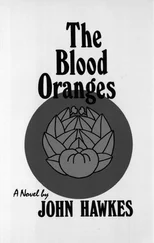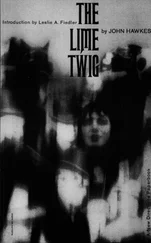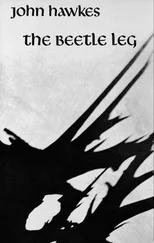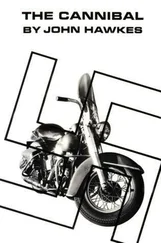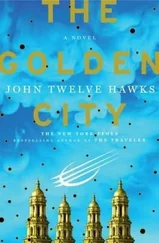They passed through customs to the welcome area, where Petros Semo was waiting for them. The Ethiopian was a small, delicate man with dark brown eyes. Lumbroso towered over his old friend. They shook hands for almost a minute as they spoke Hebrew to each other.
“Welcome to my country,” Petros said to Maya. “I’ve hired a Land Rover for our journey to Axum.”
“Did you talk to the church officials?” Lumbroso asked.
“Of course, Ato Simon. All the priests know me quite well.”
“Does this mean that I can see the Ark?” Maya asked.
“I can’t promise that. In Ethiopia we say Egziabher Kale -if God wills it.”
They left the terminal and got into a white Land Rover that still showed the emblem of a Norwegian aid organization. Maya sat up front with Petros while Lumbroso took the backseat. Before leaving Rome, Maya had sent Gabriel’s Japanese sword to Addis Ababa. The weapon was still in its shipping container, and Petros handed the cardboard box to Maya as if it were a bomb.
“Forgive me for asking, Weyzerit Maya. Is this your weapon?”
“It’s a talisman sword forged in thirteenth-century Japan. It’s said that a Traveler can take talisman objects into different realms. I don’t know about the rest of us.”
“I think you are the first Tekelakai to be in Ethiopia for many years. A Tekelakai is the defender of a prophet. We used to have many of these people in Ethiopia, but they were hunted down and killed during our political troubles.”
In order to reach the northern road they had to pass through Addis Ababa-Ethiopia’s largest city. It was early in the morning, but the streets were already clogged with blue-and-white taxi vans, pickup trucks, and yellow public buses covered with dust. Addis had a core of modern hotels and government buildings surrounded by thousands of two-room houses with sheet-metal roofs.
The main streets were like rivers fed by dirt roads and muddy pathways. Along the sidewalk, the Ethiopians had put up brightly painted booths that sold everything from raw meat to pirated Hollywood movies. Most of the men on the street wore Western clothes. They carried an umbrella or a short walking staff called a dula . The women wore sandals, full skirts, and white shawls wrapped tightly around the upper body.
On the edge of the city, the Land Rover had to force its way through herds of goats being driven into the city for slaughter. The goats were only a prelude to more encounters with animals-random chickens, sheep, and slow-moving groups of humpbacked African cows. Whenever the Land Rover slowed down, the children standing beside the road could see that two foreigners were inside the vehicle. Little boys with shaven heads and skinny legs would run beside the vehicle for a mile or more laughing and waving and shouting, “You! You!” in English.
Simon Lumbroso leaned back in his seat and grinned. “I think it’s safe to say that we’ve stepped out of the Vast Machine.”
After passing through low hills covered with eucalyptus trees, they followed a dirt road north though a rocky highland landscape. The seasonal rains had fallen a few months earlier, but the grass was still a yellowish green with patches of white and purple Meskel flowers. About forty miles from the capital they passed a house surrounded by women dressed in white. A high-pitched wailing came through the open doorway, and Petros explained that Death was inside the building. Three villages down the road, Death appeared again: the Land Rover came around a curve and almost hit a funeral procession. Wrapped in shawls, men and women carried a black coffin that appeared to float above them like a boat on a white sea.
The Ethiopian priests in the villages wore cotton togas called shammas , and their heads were covered with large cotton caps that reminded Maya of the fur hats worn in Moscow. A priest holding a black umbrella with gold fringe was standing at the beginning of the zigzag road that led down a gorge to the Blue Nile. Petros stopped and handed the priest some money so that the old man would pray for their safe journey.
They descended into the gorge, the Land Rover’s wheels just inches away from the edge of the road. Maya looked out the side window and saw only clouds and sky. It felt as if they had two wheels on the road and two wheels riding on air.
“How much did you pay the priest?” Lumbroso asked.
“Not much. Fifty birr.”
“Next time, give him a hundred,” Lumbroso muttered as Petros negotiated another switchback.
They crossed the metal bridge that spanned the Nile and drove out of the gorge. Now the landscape was dominated by cactus and desert vegetation. Goats still blocked the road, but they also passed a line of camels with wooden carrying frames lashed to their humps. Lumbroso fell asleep in the backseat, his fedora mashed up against the window. He slept through the potholes and the loose stones that rattled up inside the wheel wells, the vultures outlined against the blue sky, and the dust-covered trailer trucks that groaned their way up each new hill.
Maya rolled down the side window to get some fresh air. “I’m carrying both euros and American dollars,” she told Petros. “What if I gave the priests a gift? Would that push things forward?”
“Money can solve a great many problems,” he answered. “But this discussion concerns the Ark of the Covenant. The Ark is a very important object for the Ethiopian people. The priests would never allow a bribe to influence their decision.”
“What about you, Petros? Do you think the Ark is real?”
“It has a power. That’s all I can say.”
“Does the Israeli government think it’s real?”
“Most of the Ethiopian Jews are now in Israel. There’s no advantage for the Israelis to give foreign aid to this country, but the aid still continues.” Petros smiled slightly. “That’s a curious fact to consider.”
“Legend says that the Ark was taken to Africa by the son of King Solomon and the Queen of Sheba.”
Petros nodded. “Another theory is that it was removed from Jerusalem when King Manasseh brought an idol into Solomon’s temple. Some scholars believe that the Ark was first taken to the Jewish settlement on Elephantine Island in the Upper Nile River. Hundreds of years later, when the Egyptians attacked the settlement, it was removed to an island in the middle of Lake Tana.”
“And now it’s in Axum?”
“Yes, it’s kept in a special sanctuary. Only one priest is allowed to approach the Ark, and he does that once a year.”
“So why would they give me permission to go inside?”
“As I told you at the airport, we have a long tradition of warriors defending Travelers. The priests can understand this idea, but you present a difficult problem.”
“Because I’m a foreigner?”
Petros looked embarrassed. “Because you’re a woman. There hasn’t been a woman Tekelakai for three or four hundred years.”
IT BEGAN TO rain as they drove across the mountains into northern Ethiopia. The road passed through a bleak landscape, bare of any vegetation except for some terraced farm plots and a few eucalyptus trees planted as a windbreak. The houses, schools, and police stations were all built with chunks of yellow sandstone. Stones were piled on the sheet-metal roofs, and stone walls ran up the hillside in a useless effort to stop erosion.
Maya kept the sword on her lap and stared out the window. In this area, the only points of interest were other human beings. In one village all the men wore blue rain boots. In another village, a three-year-old girl stood by a drainage ditch holding an egg between her thumb and forefinger. It was Friday and the farmers were heading toward the open-air market. Umbrellas bobbed up and down like an army of different-colored mushrooms marching up the hill.
Читать дальше


